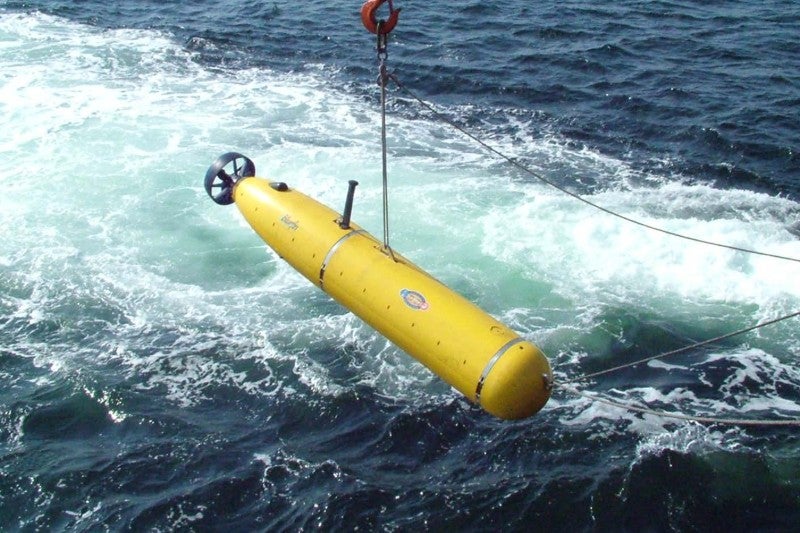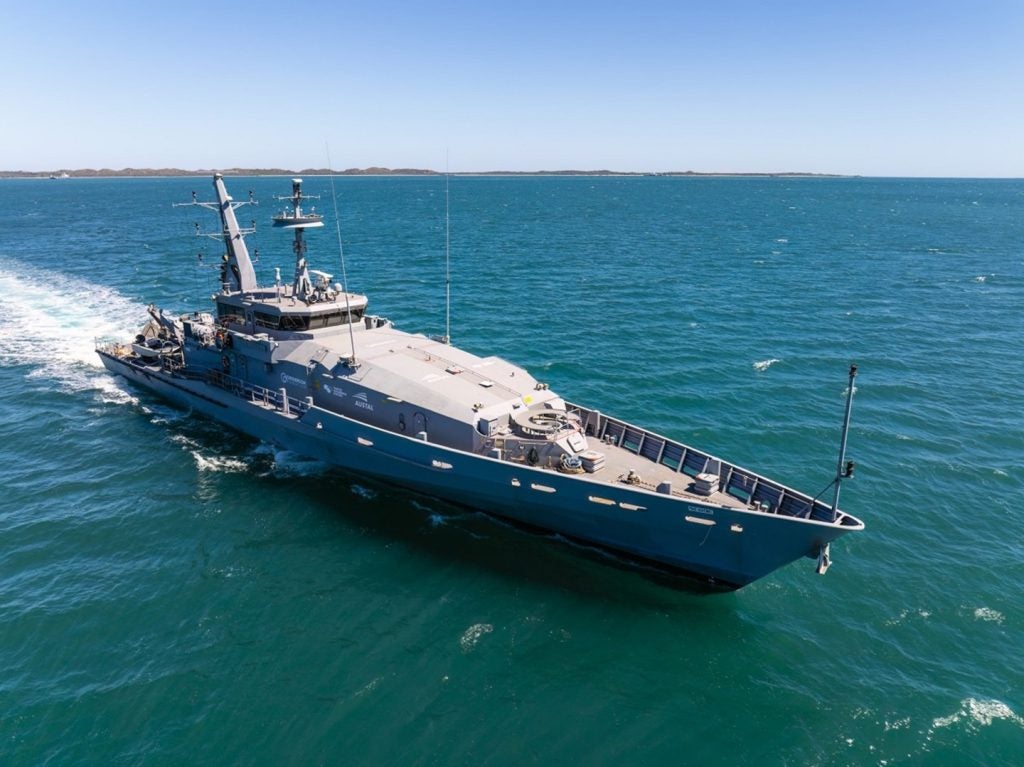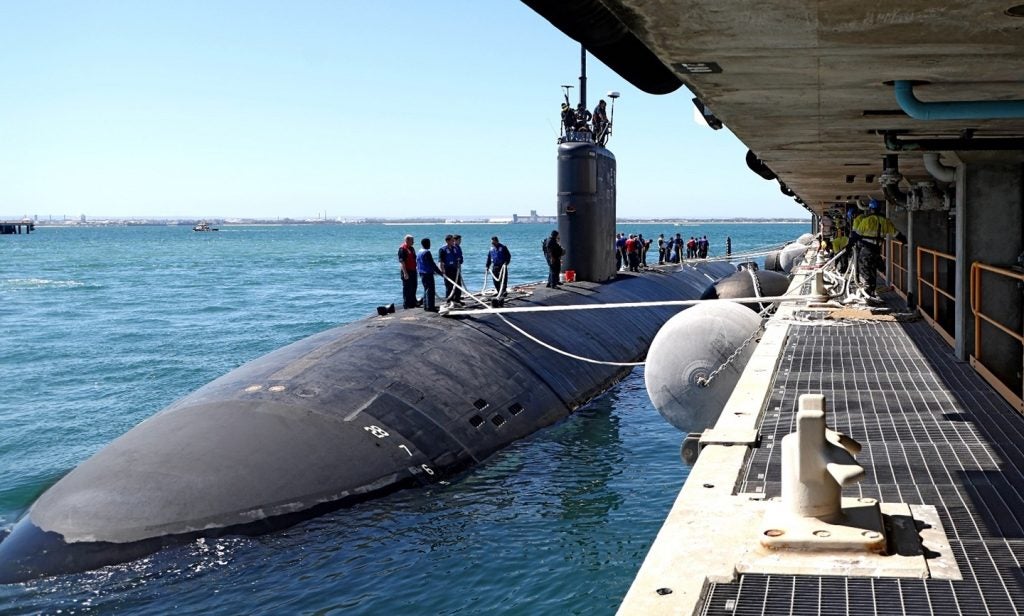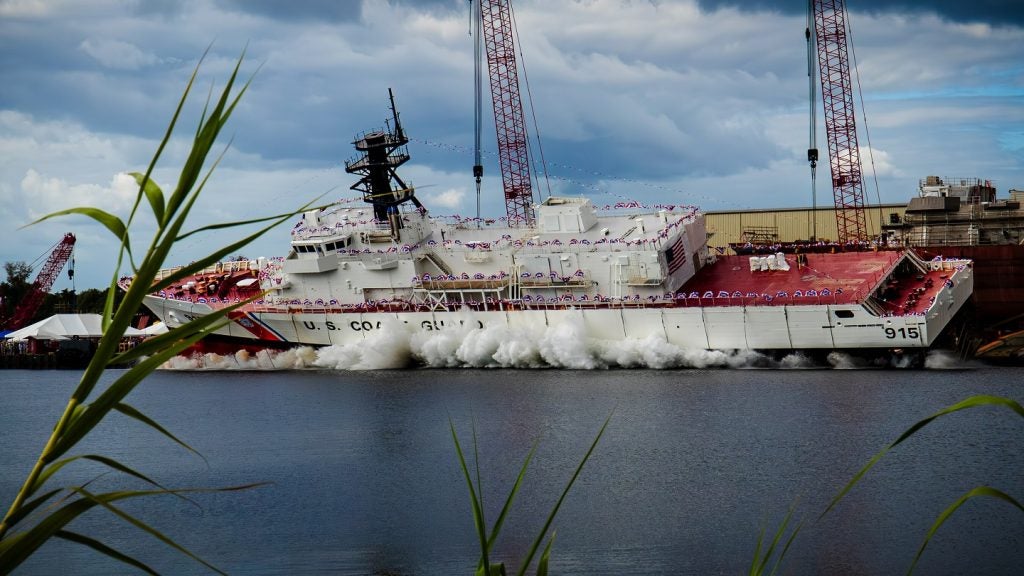
Autonomous underwater robots offer a range of military applications. They are a subset of unmanned underwater vehicles (UUVs) which can include both autonomous and remotely operated UUVs.
Autonomous underwater vehicles (AUVs) provide naval support roles such as intelligence, surveillance and reconnaissance (ISR), mine countermeasures, inspection and identification, oceanography and payload delivery. Some AUVs belonging to the largest class can perform attack roles such as anti-submarine warfare and time-critical strikes.
The US Navy categorises (AUVs) into four classes: man-portable vehicles, lightweight vehicles, heavyweight vehicles, and extra-large vehicles. What are the different classes used for and what kinds of technologies are being developed?
Man-portable

How well do you really know your competitors?
Access the most comprehensive Company Profiles on the market, powered by GlobalData. Save hours of research. Gain competitive edge.

Thank you!
Your download email will arrive shortly
Not ready to buy yet? Download a free sample
We are confident about the unique quality of our Company Profiles. However, we want you to make the most beneficial decision for your business, so we offer a free sample that you can download by submitting the below form
By GlobalDataMan-portable autonomous underwater robots are the smallest class. They are typically torpedo-shaped, but much lighter at around 10-50kg. Man-portable AUVs are generally launched from small vessels or can be integrated into a mine countermeasure vessel.
One example is the Mk 18 Mod 1 Swordfish developed by US company Hydroid, which achieved full operational capability in 2008. It can be used for low-visibility exploration activities, as well as reconnaissance, mine countermeasures and hydrographic mapping up to a depth of 40ft.
To carry out its duties, the Swordfish comes with a suite of sensors that measure almost all aspects of the local marine environment. While it has an endurance of 22 hours at 3kn, the Swordfish can reach speeds of up to 5kn during operations lasting less than eight hours.
Lightweight

Slightly bigger than the man-portable AUVs, lightweight autonomous underwater robots usually weigh up to 500lbs (227kg) although many weigh in at around 50kg. They can be launched via small craft such as a rigid-hulled inflatable boat or lowered into the water via a crane attached to a surface vessel.
General Dynamics Mission Systems’ Bluefin-12S is a larger lightweight AUV, weighing in at 213kg. It can carry multiple payloads, and perform mine countermeasure actions and unexploded ordnance detection.
One of the key features of the Bluefin-12S is its additional energy storage modules that allow operators to change the mission requirements in-field. With an endurance of 26 hours at 3kn, it is one of the longer lasting lightweight AUVs, but not the fastest.
In terms of speed, ATLAS’s SeaWolf (also called SeaFox) lightweight AUV is more useful for particularly time-sensitive mine disposal operations, with its ability to autonomously travel up to 8kn for around three hours.
Heavyweight

The heavyweight types of autonomous underwater robots generally weigh between 5,000kg and 10,000kg, and are used for longer missions that require endurances of 40-80 hours.
Deployed via crane or launched from a submarine, heavyweight AUVs carry out similar tasks as the smaller classes but on a longer and larger scale.
A good example of a versatile large-diameter AUV is Boeing Defense’s Echo Ranger, a 5,000kg rectangular AUV resembling a small whale. The Echo Ranger can carry payloads of up to 250kg according to a Boeing factsheet, and makes use of an active seawater ballast and trim system, which allows the Echo Ranger to stabilise itself autonomously to depths of up to 10,000ft.
The US Navy is currently developing a new large-diameter UUV (LDUUV), which is expected to be produced between 2021 and 2022. The purpose of the LDUUV project is to “conduct missions longer than 70 days in open ocean and littoral seas, being fully autonomous, long-endurance, land-launched with advanced sensing for littoral environments”, according to a 2015 report published in the International Journal of Advanced Research in Artificial Intelligence.
Extra-large

There is no limit to the size and scope of extra-large UUVs (XLUUVs). The largest autonomous underwater robot currently in development is the Cutthroat LSV-2, a 33m long AUV weighing in at around 185,000kg. It is designed as a smaller, autonomous version of the US Navy’s Virginia-class attack submarine. The Cutthroat is used by the US Naval Surface Warfare Center for hydro-acoustic research and vehicle research.
Another XLUUV concept in development is Boeing’s Orca, which according to USNI news, can eventually be upgraded to support “mine countermeasures, anti-submarine warfare, anti-surface warfare, electronic warfare and strike missions”.
Boeing’s Orca design is based on its previously developed Echo Voyager XLUUV, which can perform duties at sea for months at a time. The US Navy awarded $42m to Boeing in February 2019 to build four Orca XLUUVs, after the company’s design was chosen over Lockheed Martin’s Orca concept.







